A 10kg block rests on a 5kg bracket as shown in figureThe 5kg breaket rests on a horizontal surface The coefficient of frictionbetween the 10kg block and the braket on wich it rests are μs=0.40andμk=0.30
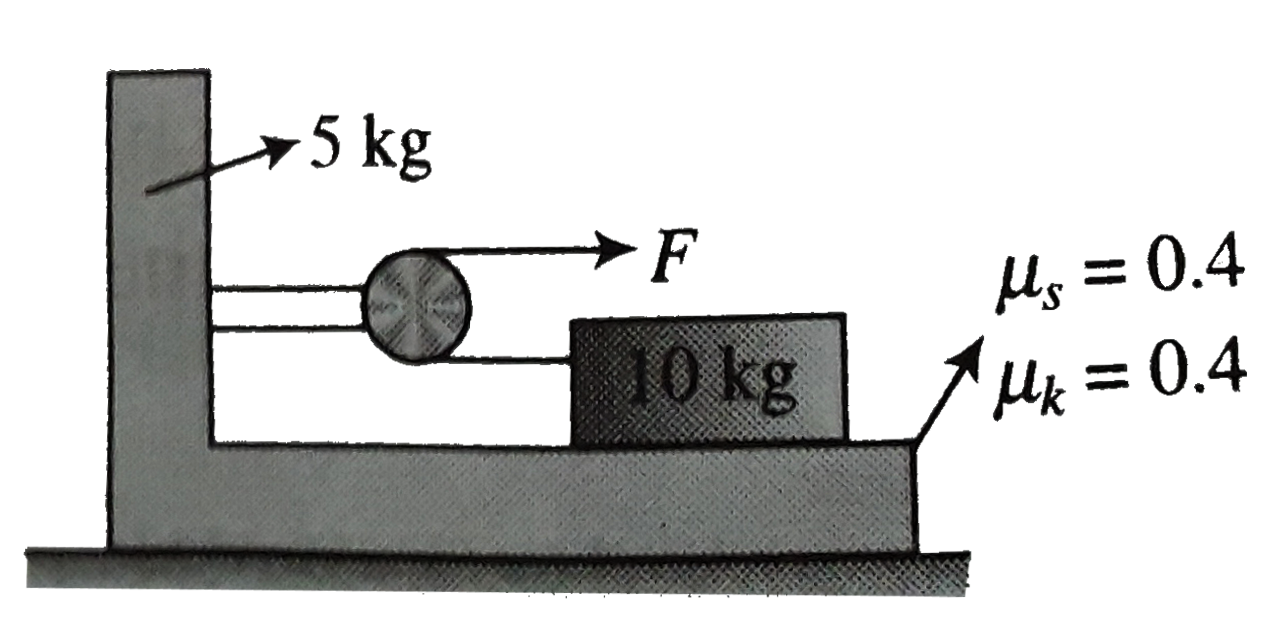
If the 10kg block is not to slide on the braket , the corresponding acceleration of the 5kg braacket is
1.6ms−2
0.8ms−2
1.2ms−2
2.4ms−2
The correct Answer is:a
Assuming system move togather there is no sliding acceleration of the system
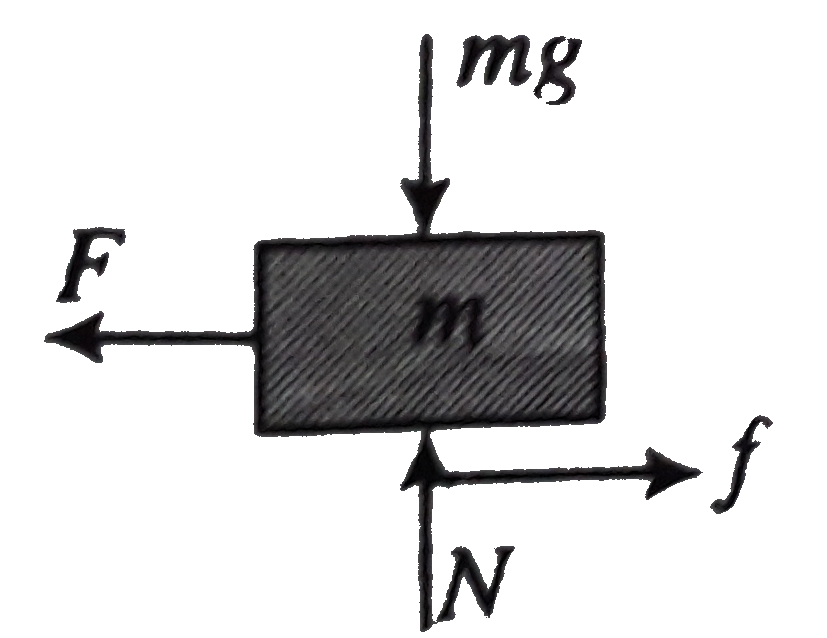
a=F(3+10)=F15
FBD of m
FBD of mf−F=ma=10(F15)
⇒f=F(1+1015)=53F
If there is no sliding F≤μsN
F[55]≤0.4×10×10⇒F≤24N
From (i) a=F15=2415=1.6ms−2
Topper's Solved these Questions
- BOOK - CENGAGE PHYSICSCHAPTER - NEWTON'S LAWS OF MOTION 2EXERCISE - Integer6videos
NEWTON'S LAWS OF MOTION 2
- BOOK - CENGAGE PHYSICSCHAPTER - NEWTON'S LAWS OF MOTION 2EXERCISE - True And False4videos
NEWTON'S LAWS OF MOTION 2
- BOOK - CENGAGE PHYSICSCHAPTER - NEWTON'S LAWS OF MOTION 2EXERCISE - Multiple Correct2videos
NEWTON'S LAWS OF MOTION 2
- BOOK - CENGAGE PHYSICSCHAPTER - NEWTON'S LAWS OF MOTION 1EXERCISE - Integer5videos
NEWTON'S LAWS OF MOTION 1
- BOOK - CENGAGE PHYSICSCHAPTER - PROPERTIES OF SOLIDS AND FLUIDSEXERCISE - INTEGER_TYPE2videos
PROPERTIES OF SOLIDS AND FLUIDS
Similar Questions
A horizontal force of 1.2kg is applied on a 1.5kg block, which rests on a horizontal surface If the coefficient of friction is 0.3 find the acceleration produced in the block.
View SolutionA block having a mass 3kg is initially at rest on a horizontal surface. The coefficient of static friction μs=0.3 between theblock and the surface and μk is 0.25 .A constant force F of 50 N, acts on the body at the angle θ=37∘. What is the acceleration of the block ?
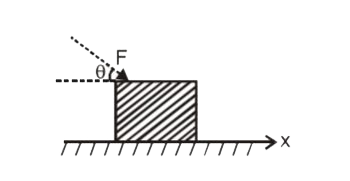 View Solution
View Solution
Knowledge Check
- Question 1 - Select One
A 10kg block rests on a 5kg bracket as shown in figureThe 5kg breaket rests on a horizontal surface The coefficient of frictionbetween the 10kg block and the braket on wich it rests are μs=0.40andμk=0.30
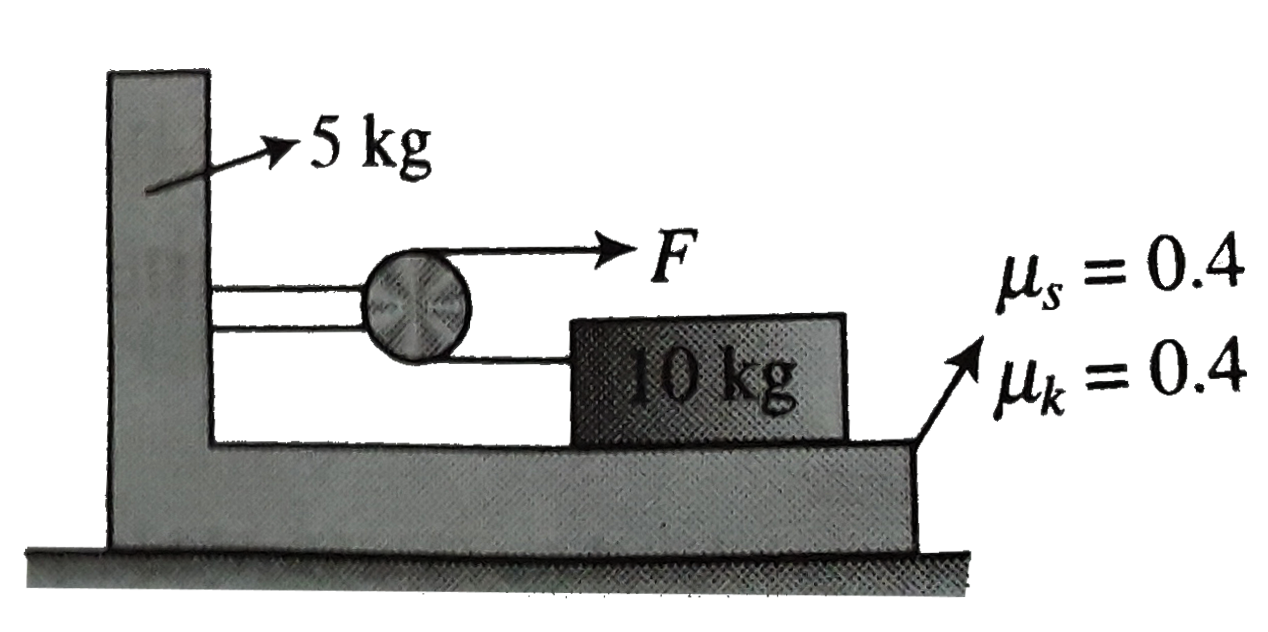
The maximum force F that can be applied if the 10kg block is not to slide on the braket isA32NB24NC18ND48N - Question 2 - Select One
A 40kg slab rests on a frictionless floor as shown in the figure. A 10kg block rests on the top of the slab. The static coefficient of friction between the block and slab is 0.60 while the kinetic friction is 0.04 . The 10kg block is acted upon by a horizontal force 100N. if g=9.8m/s2 , the resulting acceleration of the slab will be.
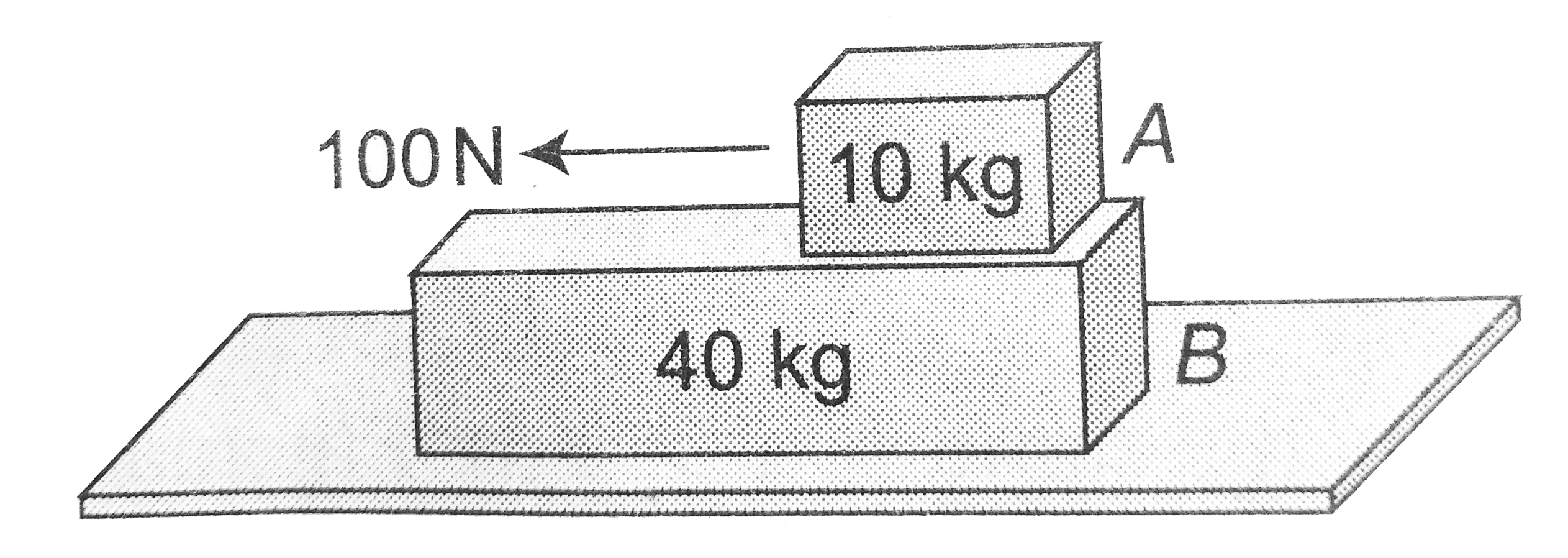 A1m/s2B1.5m/s2C2m/s2D6m/s2
A1m/s2B1.5m/s2C2m/s2D6m/s2 - Question 3 - Select One
Consider the shown arrangement. The coefficient of friction between the two blocks is 0.5 . There is no friction between the 4 kg block and of 12 N is applied on the 2 kg block as shown in the figure, the acceleration of the 4 kg block would be
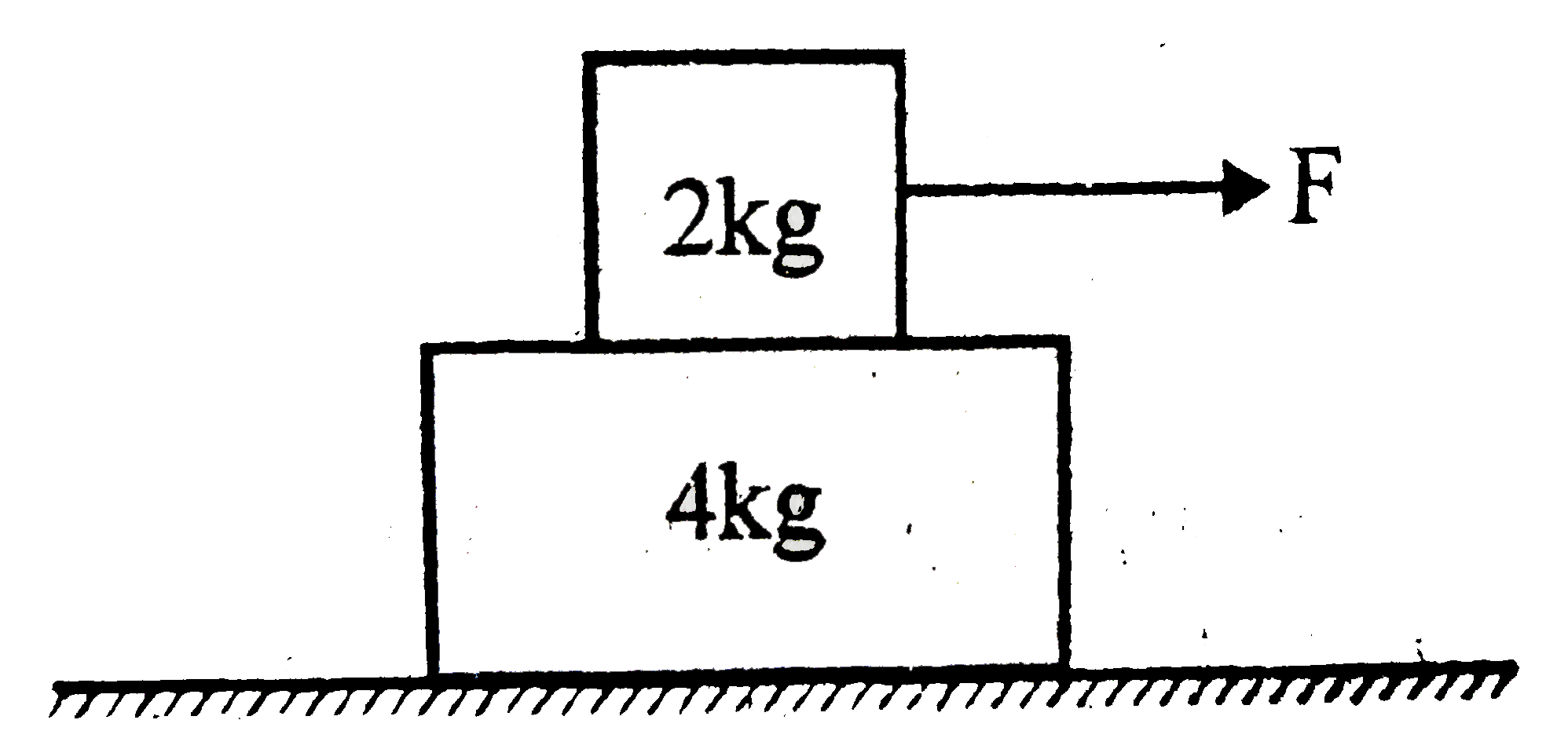 A2.5m/s2B2m/s2C5m/s2DNone
A2.5m/s2B2m/s2C5m/s2DNone
The block A in the given figure is of mass 10√3 kg The coefficient of friction between the block and the surface on which it rests is 0.5. Find maximum mass of block B possible such that the system will be in equilibrium is.
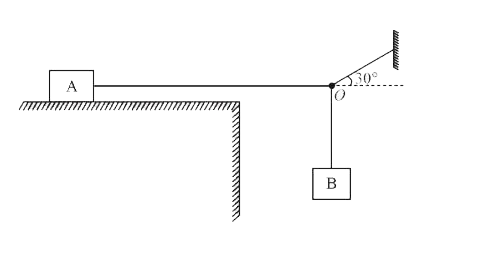 View Solution
View SolutionA 40 kg slab rests on a frictionless floor. A 10 kg block rests on top of the slab. The coefficient of friction between the block and the slab is 0.40. The 10 kg block is acted upon by a horizontal force of 100 N. If g=10m/s2, the resulting acceleration of the slab will be
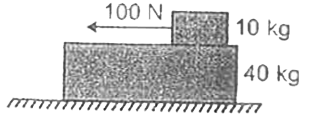 View Solution
View SolutionA block of 5 kg is resting on a horizontal surface. The coefficient of kinetic friction between the block and the surface is 0.2. What is the acceleration with which the block will remove if a force of 9.8 N is applied to it ?
View SolutionA 40 kg slab rests on a frictionless floor as shown in the figure. A 10 kg block rests on the top of the slab. The static coefficient of friction between the block and slab is 0.60 while the kinetic friction is 0.40. The 10 kg block is acted upon by a horizontal force 100 N. If g=9.8ms2, the resulting acceleration of the slab will be
 View Solution
View SolutionA force of 50N acts in the direction as shown in figure. The block of mass 5kg, resting on a smooth horizontal surface. Find out the acceleration of the block.
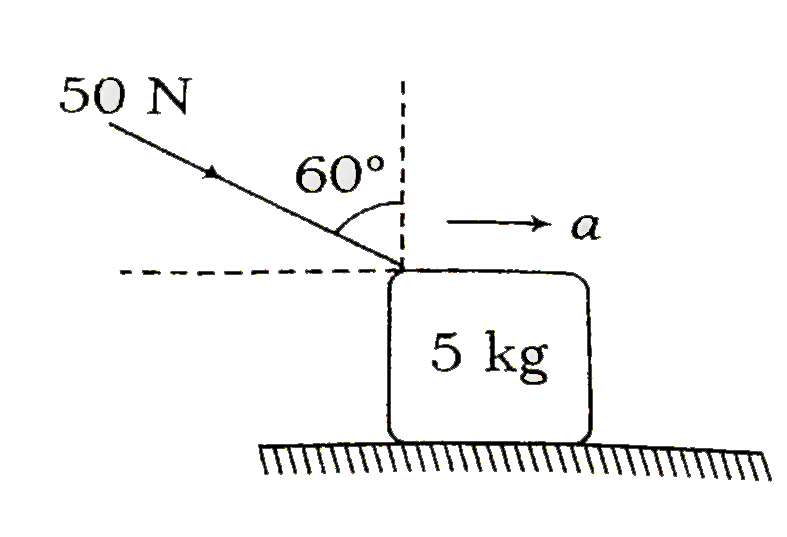 View Solution
View Solution

